In-depth analysis of Facebook ADS ad delivery platform (3): business scenarios, campaigns, ad groups
The series explores Facebook's advertising ecosystem from the perspective of Facebook ADS, but Facebook ADS, as a system at the front end of advertisers, has limitations, such as layout, bidding and other core modules in the advertising system will not be detailed enough.
In the series of articles, first from the tool level analysis of Facebook ADS, tool level abstraction level and dimension are relatively high, that is, the first article, and then from the user, account, resources and advertising structure module level of the four aspects of analysis, module level is more moderate, help to clear the context of the system, that is, the second article; Going back to principles and mindsets at the product level, interpreting the design principles embodied in Facebook ADS, Geek Park's article inspired me a lot, "Declassified Facebook's advertising business: What is the win-win between user experience and business value?" 》:
http://www.geekpark.net/news/226276
The last article briefly dissects Facebook ADS from four aspects: user, account, resource, and ad structure, and introduces what Facebook ADS has, so that we have a basic context in our analysis.
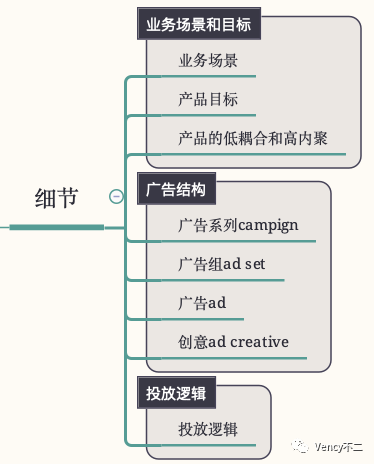
This article and the structure below
The whole Facebook ADS is expected to be most interested in the advertising structure and delivery logic, this article will first describe the business scenario and objectives, after all, ADS is to meet the needs of the business, understand the scenario before you understand why this design, and then with the next article to detail the advertising structure and delivery logic, especially ads in the desktop reflected in the characteristics.
Business scenarios and goals
The business scenario
Both Facebook ADS and Marketing APIs are designed to meet business needs, which come from business scenarios, and the perception of business scenarios directly affects the understanding of requirements and the design of functionality.
Facebook advertising business scenarios are many, closely related to the advertiser's business, e-commerce advertisers want to increase purchases and transactions, sell their own goods, brand advertisers want to increase frequency and coverage, emphasize long-term and wide coverage of the brand effect, game advertisers want to increase user numbers and ARPU, emphasize game revenue, advertisers do local brick-and-mortar advertisers want to increase offline traffic and so on. Business scenarios and advertisers in the industry has a great relationship, the same industry in different directions there are differences, such as e-commerce sub-integrated stations and independent stations, in the company's strength, technical strength, product richness and other aspects have some differences, not to mention there are a large number of advertisers to help advertising agencies.
Product objectives
Commercial products are toB and toC products combined, from 0 to 1 general commercial products are not a problem, because there is traffic value, and commercial products from 1 to 100 is the problem, the core problem is how to generate more user value and business value, from the user experience, business scenarios, improve the average exposure income, and how to horizontal all advertisers common Facebook ADS and Marketing Api two products to meet the vertical industry and segment industry business scenario, is to do the desktop and marketing API when one of the core issues.
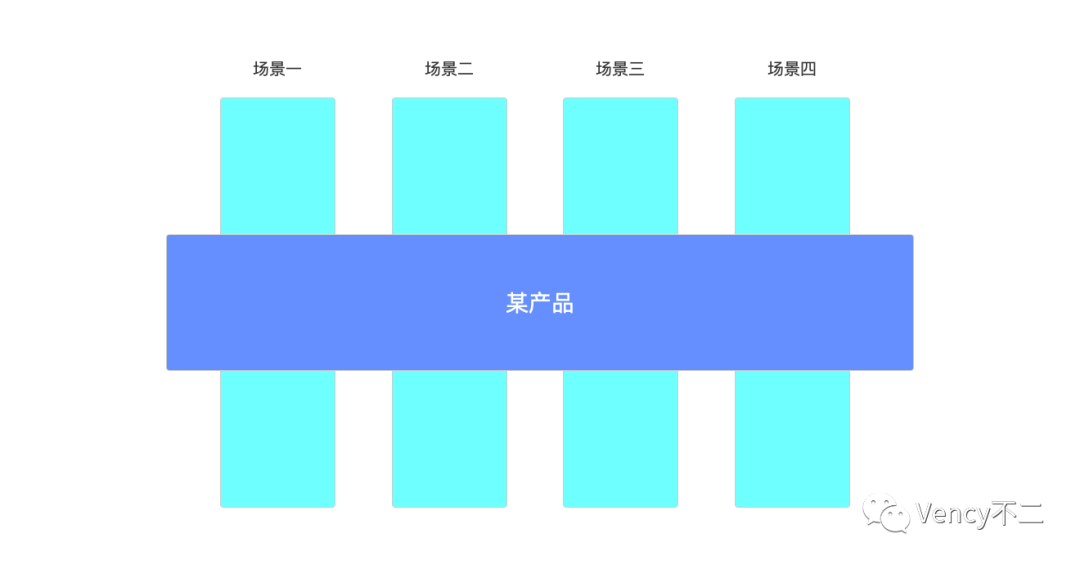
Scenes and product models
Thus, Facebook ADS product objectives should be summarized in two points: 1. to meet the needs of the B-side, cover the B-side usage scenario, improve the efficiency of use and advertising performance 2. As the delivery side with the media side, algorithms and so on to achieve the goal.
PS: In addition to the delivery module in Facebook ADS, there are realization modules, which are referred to in this series, and the realization module has little to do with ad serving.
Low coupling and high cohesion of the product
Low coupling in a product means that the connection between each system, each module, each function, each entity, etc. is simple, not complex, at the system, module, function, entity, and so on.
Facebook ADS from 1 to 100 process to gradually meet the vertical industry and sub-sector business scenarios, as the business development, Facebook ADS features and modules will be more and more, but also the integration of other products, Facebook ADS complexity skyrocketed, how to expand the premise of the business can also maintain the product's low coupling high cohesion, is a difficult problem, but also in-depth consideration of product design points.
Use an example to illustrate this point. Native advertising to meet both the performance of native and intent native, so as to obtain commercial value and user experience win-win situation, after all, the media also do not want to waste their own traffic, the precious advertising exposure wasted to the user can not point ads. Performance native refers to the advertising content and media content in the performance layer is consistent, the media side wants to show the native, and advertisers certainly have custom content, so the design of publishing space and creative two objects, layout is fixed by the media side and media content consistent, the same layout presented to the user's style is the same, feed layout and dynamic style is basically the same, creativity is the content of the layout, by the advertiser's own definition, the picture, text, title, etc.
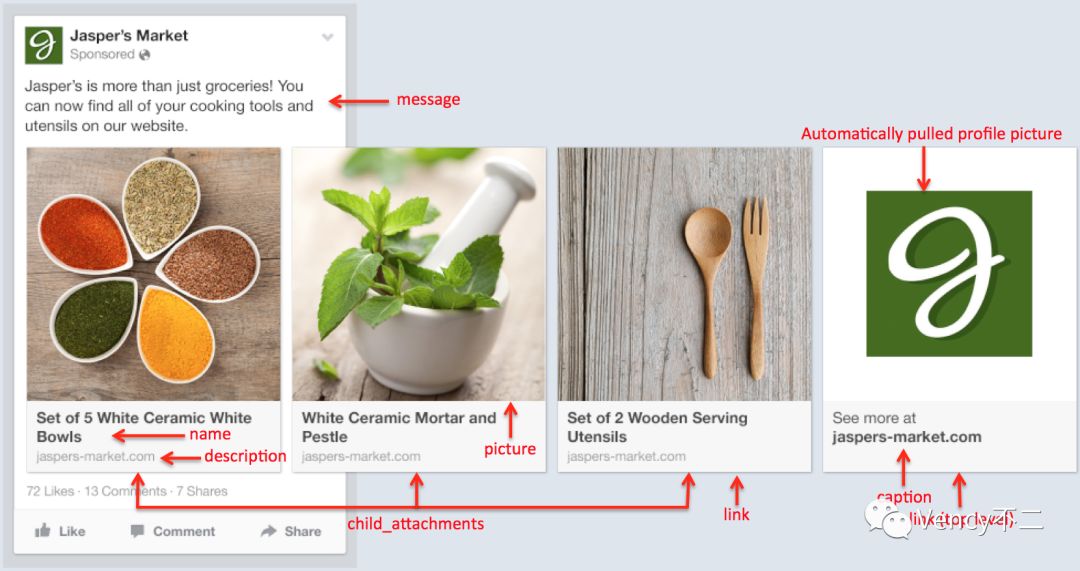
Places and ideas
There are many examples of this, and that's why Facebook ADS is so complicated. It is hoped that readers will understand this logic so that they can have a better understanding of the advertising structure and the design of the delivery logic below. More highly cohesion low-coupling content can be seen in another article I've written before:How Product Managers Iterate Products Based on Requirements (Part 1): High Cohesion And Low Coupling of Product Design
The structure of the ad
 The main content of the structure at all levels
The main content of the structure at all levels
Campaign campign
The most important thing for campaigns is to determine marketing goals and types of purchases, marketing goals are the purpose of running ads (what you want users to do when they see ads), brand awareness includes brand awareness and reach, purchase intent includes visits, engagement rates, app installs, video views, lead development, message interactions, action conversions include conversions, catalog promotions, store visits.
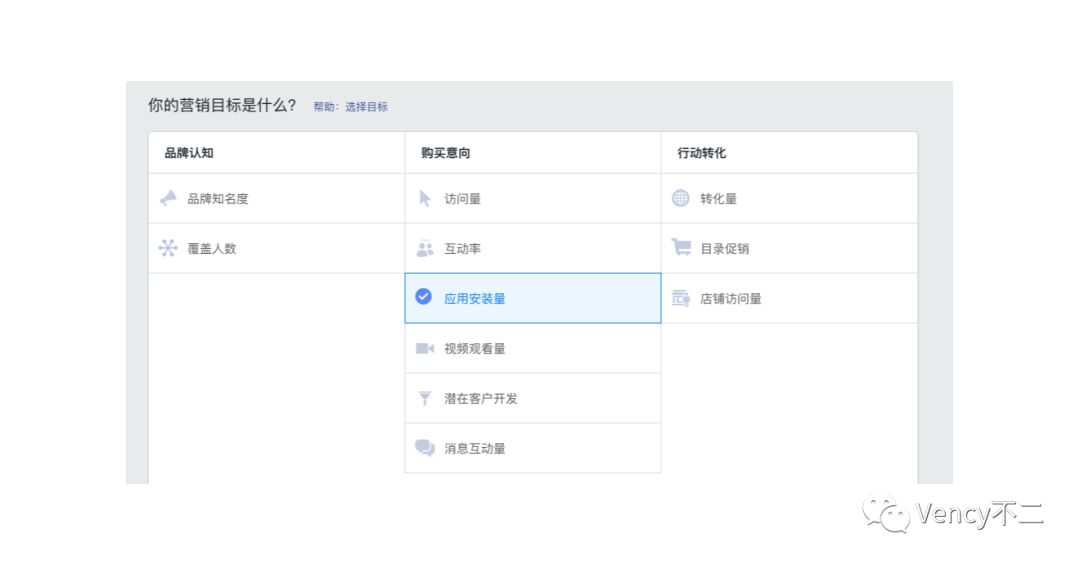
Set marketing goals
Marketing objectives are abstracted from the needs of the business scenario, brand awareness category goal is to the most likely to recall the advertising of the crowd to display ads, purchase intention class goal is to attract the audience to consider the advertiser's business and do more understanding, action conversion class goal is to increase the site or high-value operations in the application, these three types of marketing objectives cover the brand, business, behavior three blocks, covering the vast majority of the delivery scene.
Because of the three-level structure of campaign-ad group-ad, the campaign can be based on the depth of marketing objectives to meet customer needs, such as catalog promotion as a marketing target under the campaign can be set a series of merchandise catalog for advertising, this feature for e-commerce customers, and the application installed, access and other marketing targets under the campaign can not set the catalog. Marketing goals can be used to differentiate needs and provide different services and capabilities to different marketing objectives.
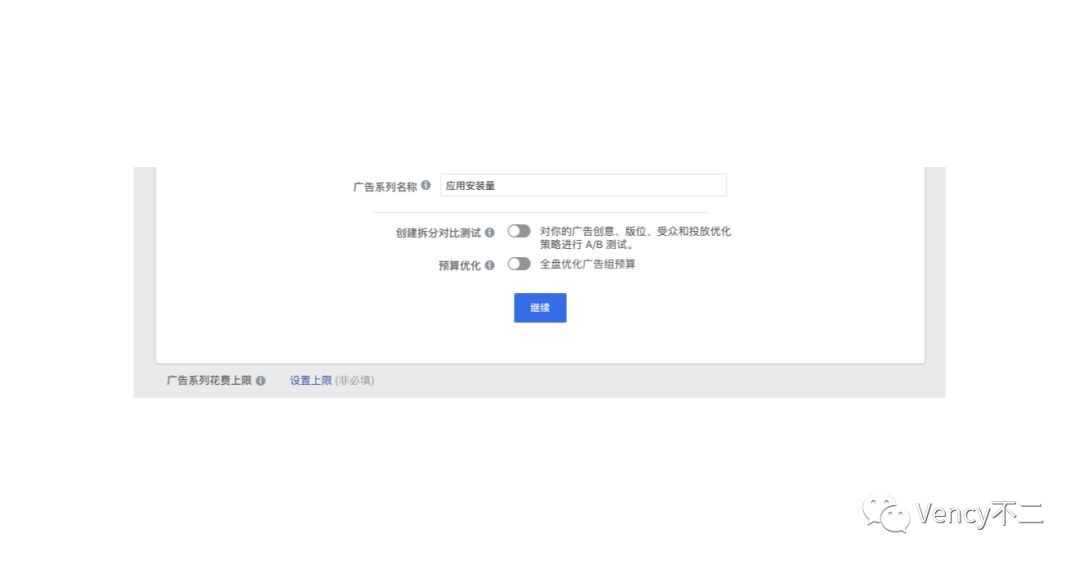
The rest of your campaign's settings
In addition to your campaign goals, campaign settings include campaign names, create split comparison tests, budget optimization, campaign spend caps, and features unique to the Marketing API. It's also interesting to create a split comparison test and talk about it later. Budget optimization means optimizing your ad group budget across the board by automatically rebalancing your budget every day for all ads in this campaign. Campaign spending caps are the setting of budgets for campaigns.
Unique features in the Marketing API include purchase type, bid strategy, daily budget, total budget, start time, and end time. There are two types of purchase, action and reserved, auction refers to auction auction, reserved is suitable for coverage and frequency advertising, reserved is mainly used for brand advertising, reserved campaigns under the ad group unique ad rotation and sorting of delivery functions, it is clearly specifically designed for brand delivery. Bid strategies, daily budgets, total budgets, start times, end times can be set in campaigns or ad groups, one for both levels, generally at the ad group level, because the competition between the same ad groups, especially those with a budget/bid strategy, is much more intense than setting up multiple ad groups with separate budget/bid strategies, see the Logic section.
Ad group ad set
An ad group contains one or more ads. At this level, you need to set your ad group's budget, scheduling, targeting audiences, and more. Create ad groups and set up bids for each group of target audiences, and the ads they contain at the bottom will target the same audience with the same auction. This helps you control your ad spending for each group of audiences, determine when you're running your ads, and get metrics for your ads among each group of audiences.
Ad group settings include serving subjects (APPS, links, etc.), dynamic footage switches, audiences, layouts, and budget scheduling.
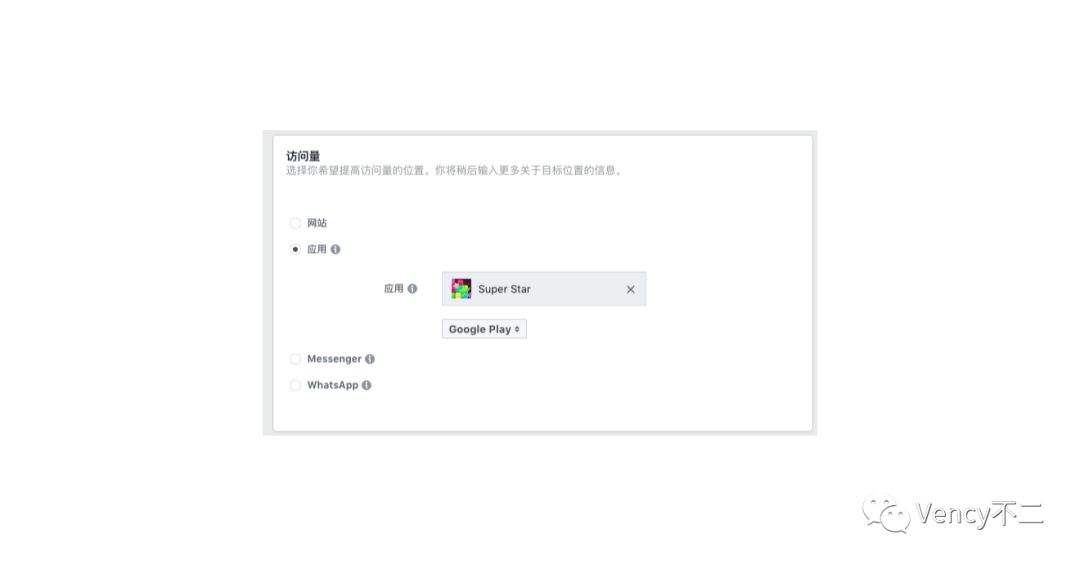
The delivery body
The target is related to the "marketing goal" in the campaign, the marketing target is set to the app install, you need to select the right app as the serving body, the marketing target is set to the traffic, you need to select the appropriate link as the serving body, or you can set Up Messenger or WhatsApp directly.
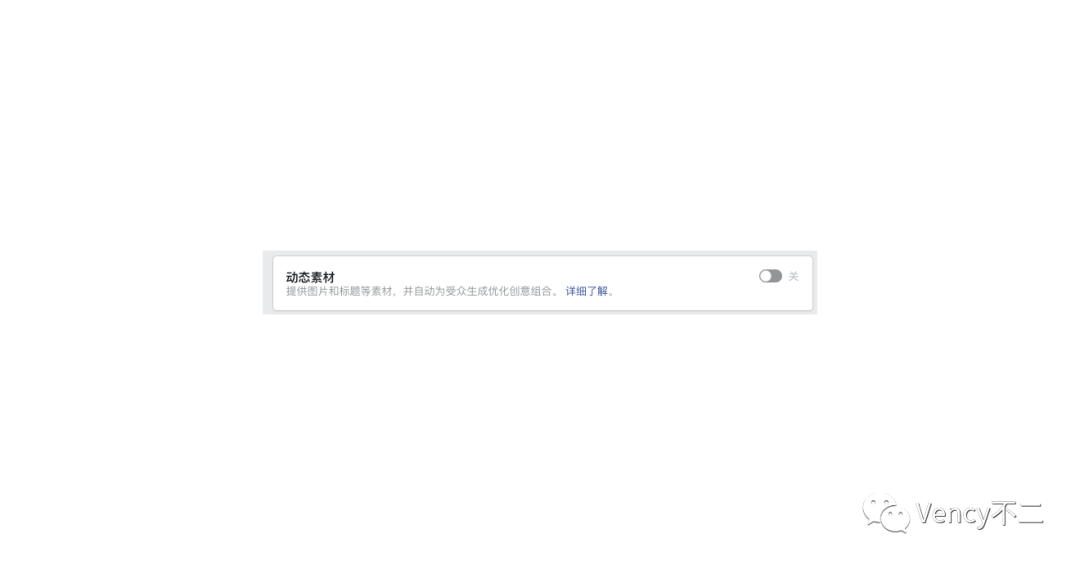
Dynamic footage
Dynamic footage (dynamic creativity) refers to the automatic experimentation and delivery of different versions of advertising ideas. Advertisers provide multiple ad images, multiple titles, multiple descriptions, and other footage, and then learn how these materials are grouped across audiences to find the best creative mix for each impression. Ideas in dynamic footage are automatically combined by the system, while ordinary ideas are set by advertisers themselves. Explore a large number of creative combinations and audiences more efficiently by presenting different ideas for the best segment of the audience among different segments of the same target audience, and automating the creative testing process, ultimately enhancing ROI.
Someone might ask, dynamic feeds don't seem to have anything to do with ad groups, so why not set them up under ads? The main reason is that dynamic materials require more setup of ad groups, non-compliant ad groups can not use dynamic materials, such as optimization goals and payment methods, the layout must be Facebook or audience network, budget and bidding requirements. Campaigns, on the other hand, have only marketing goals, i.e. conversions, mobile app installs, and link clicks can use dynamic footage. Therefore, do not use dynamic materials on the ad group's settings have a great impact, always can not let users in setting up ads to find to use dynamic footage and then go back to change the ad group's settings. In the future, dynamic footage may be set up in your ads if it can cover more scenes in your ad group. In addition, dynamic footage is a match between audience and idea, and audience settings belong to ad groups, which may be more understandable to users in ad group settings.
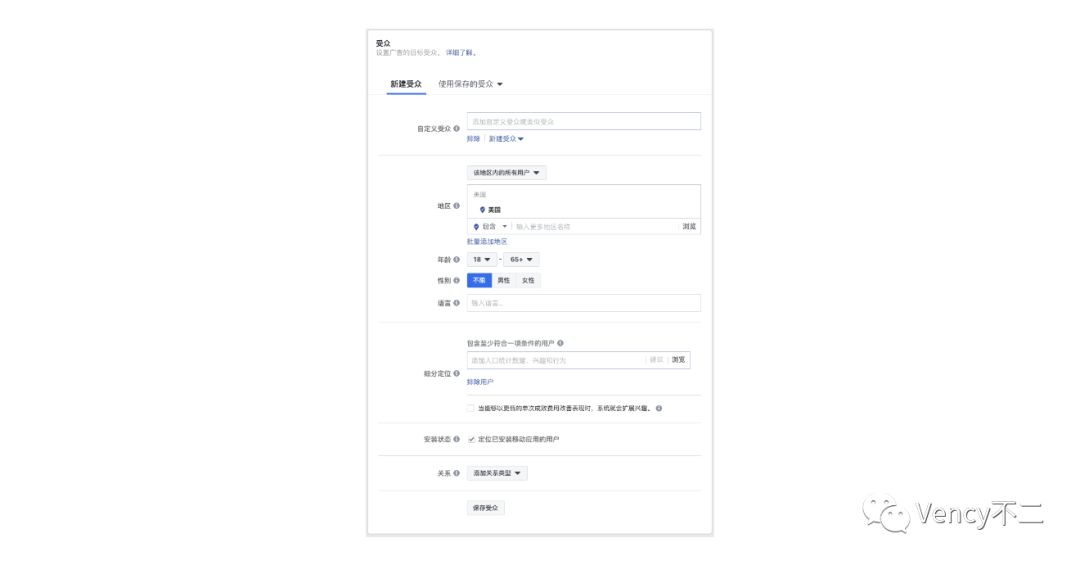
Audience
The audience is divided into people and targeting, the crowd is the custom audience that one, the rest is targeting. Crowds are actually crowd packs, also known as audiences in Facebook ADS, which refer to the people who receive ads, create audiences based on customer data, conversion data,such as your app or website's activity, and target ads to your audience. Targeting is attributes such as demographics or locations that serve ads to Facebook users who match those attributes. If you want to recall for a group of older users, we recommend using the Audience feature, you want to target ads to people of interest at a certain age, and we recommend targeting. The two combinations are also common.
There are three kinds of audiences, there are really only two, save the audience, lookalike audience and custom audience three categories of saved audiences just save the content of the form items in the audience module for easy use next time, and users (facebook users, ad recipients) have nothing to do with the user (Facebook users, ad recipients), and lookalike audiences and custom audiences are really grouped users, directly related to users, so in the Marketing API can only create lookalike and custom audiences, The saved audience feature is just an innovation in Facebook ADS and has nothing to do with the Marketing API. Custom audiences need to be built with customer information, including advertisers' behavior events, phone numbers, email addresses, names, dates of birth, gender, location, app user numbers, Page-wide user numbers, Apple ad identifiers (IDFA), or Android ad numbers, and more. Lookalike audience, seed customer base most similar users. Lookalike audiences use several groups of users as "seeds," and Then Facebook builds an audience that includes similar users, such as choosing Custom Audiences for seed for lookalike audiences or Page fans as seeds.

Relationship.
Positioning is simple, including region, age, gender, language, segmentation, relationships. Segmentation includes demographics (education, financial situation, parents, politics, etc.), interests (fitness and wellness, business and industry, entertainment, family members and emotional status, etc.), behavior (mobile brands, expatriates, anniversaries, multicultural advocates, etc.), and it has to be said that Facebook's segmentation is extremely detailed. Relationships are users who have relationships with pages, apps, events, and so on, and are typically used to exclude users who have installed apps and followers.
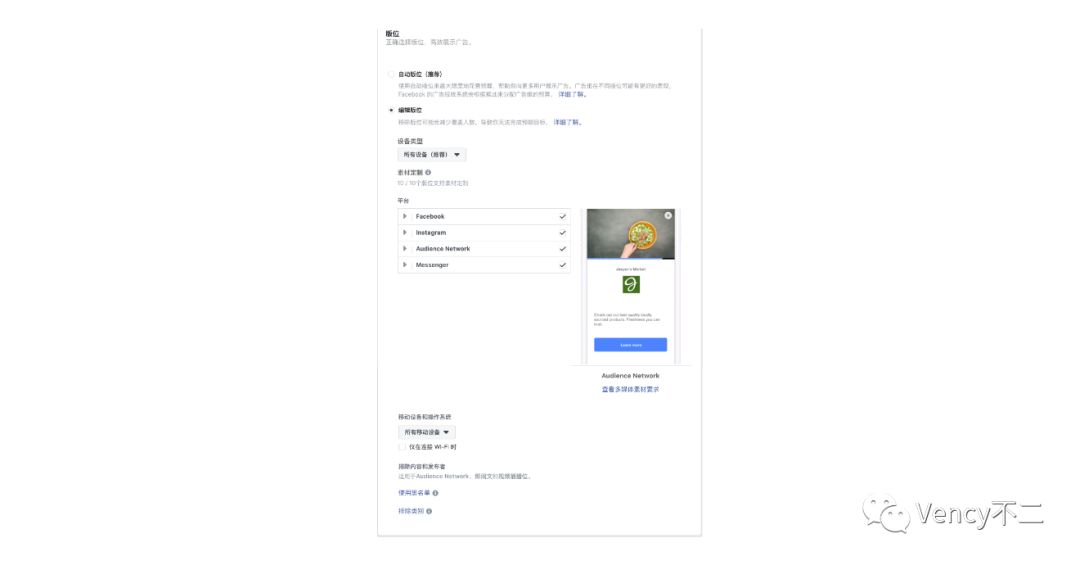
The layout
A place is where it's placed on which Facebook product. Selecting automatic places, Facebook's ad delivery system first serves ads to all places, and then allocates the ad group's budget under different places based on how each site performs.
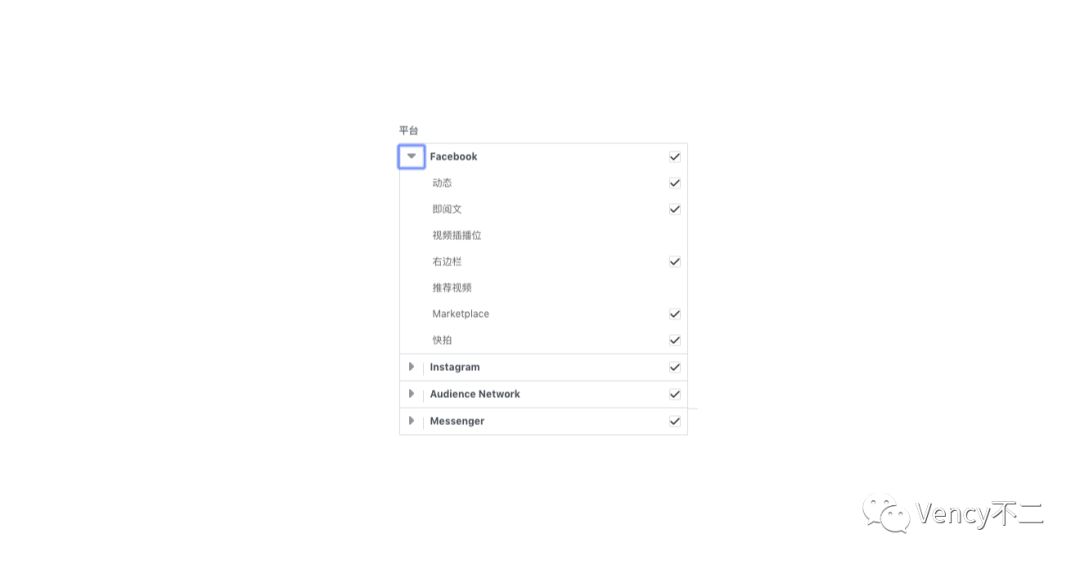
Ads under Facebook
Choose an editing position and choose your own platform, which includes Facebook, Instagram, Audience Network, Messenger. With the exception of Audience Network, which is owned by Facebook, Audience Network is Facebook's advertising network.
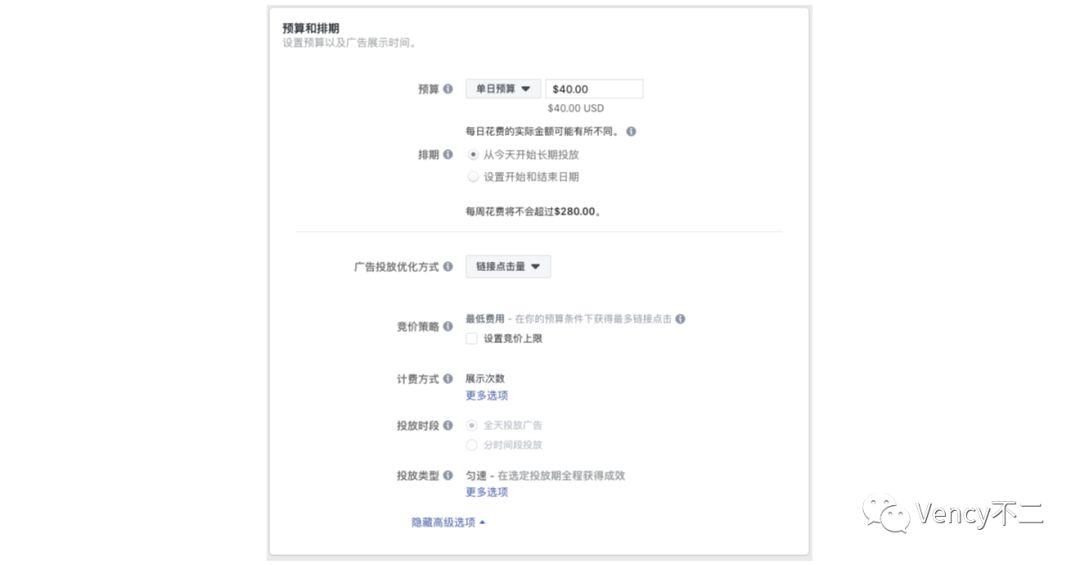
Budget and scheduling
There are many items in the Budget and Scheduling module that are directly related to the delivery policy. Budgets are divided into daily budgets (daily budgets) and total budgets to increase or decrease the importance of corresponding instances by increasing or decreasing budgets among different campaigns/ad groups, such as when an ad group test finds that buying is cheaper and buying more, boosting the budget to buy more.
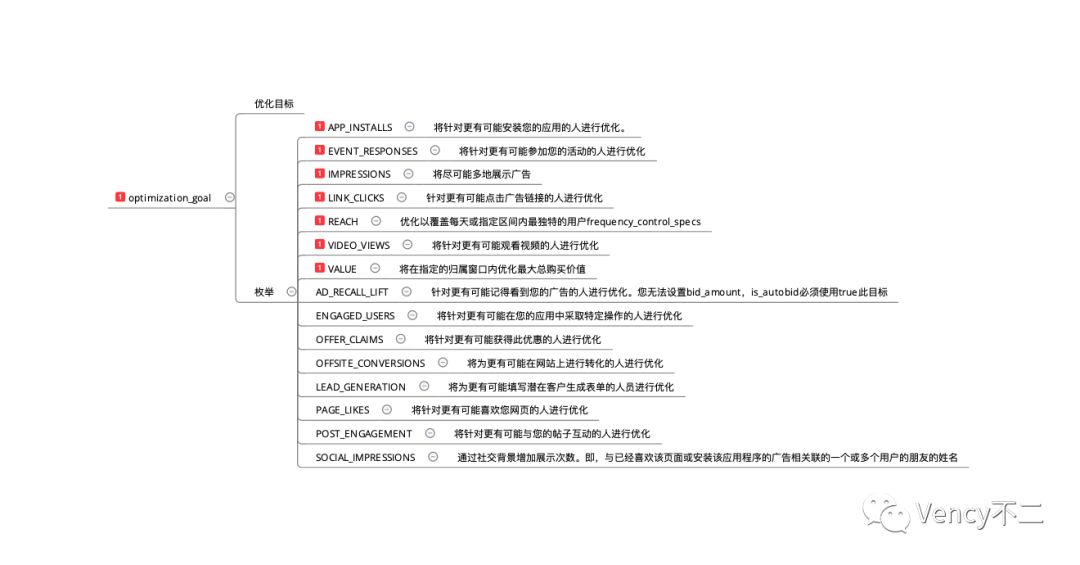
How your ads are optimized
Ad serving optimization refers to what Facebook's delivery system is using as an indicator to optimize this ad group, and if you select link clicks, Facebook will show ads under this ad group to the people who are most likely to click on the link. The number of optimization methods to choose from is directly related to marketing objectives. Ad delivery optimization methods in particular test the algorithm and data capabilities of the advertising system, the most original display ads are no way to optimize the delivery of ads, only to everyone. And the effect of advertising began to test the algorithm and data capabilities of the advertising system, advertising platforms generally use simple indicators such as clicks or installs as an optimization method, and Facebook has so many optimization methods to meet different scenarios, have to admit that Facebook has a great accumulation of data and technology, very advanced.
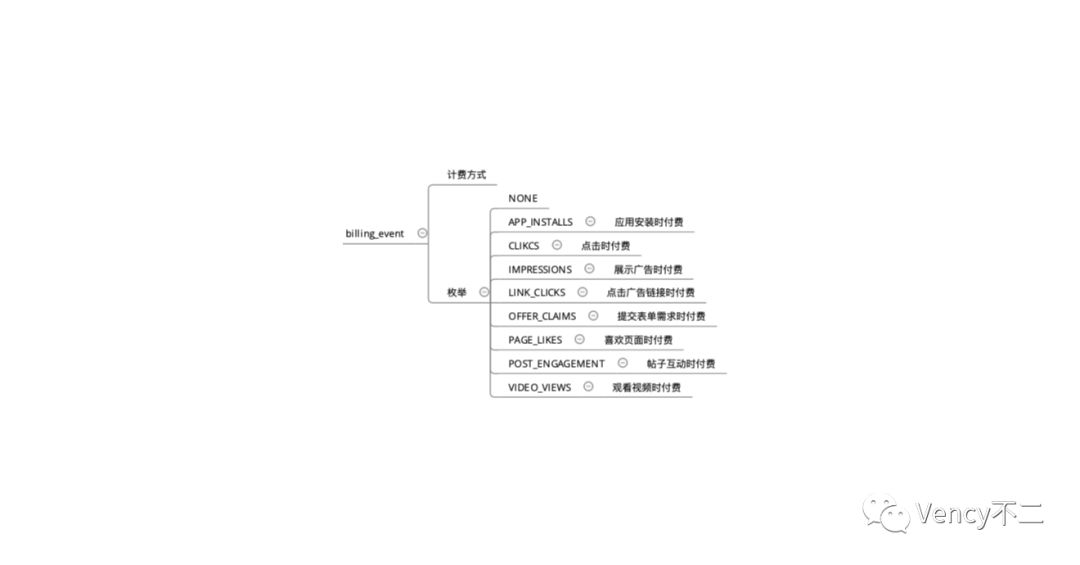
How to bill
Billing refers to what metrics advertisers want to use as a criterion for deducting budgets and is directly related to expenses. The billing method to choose is directly related to the marketing target, and the ad group under the marketing target of installing the app does not support the OFFER_CLAIMS such as the selection method. Looking at billing methods, you can see that some billing methods are at a higher level of marketing funnels than others, making it easier to spend money. Facebook requires an ad account to accumulate a certain amount before it can open certain billing methods, such as APP_INSTALLS requires a certain amount of installation under this ad account, because there is no installation amount to APP_INSTALLS billing, it is very likely not to vote out, there is no amount.
Small and medium-sized advertising platforms usually take optimization and billing as the same conditions, CPC is to click optimization also to clicks billing, CPA is to conversion optimization also to conversion billing. Domestic large platform is currently more popular oCPC, that is, to conversion optimization plus pay-per-click. With the development of advertising business, I believe that the domestic platform will also be split into optimization and billing methods. Because through optimization objectives, can help the advertising system to understand customer needs, as far as possible to meet customer requirements of optimization goals, rather than clicks or conversions in one go, for advertisers to better control the level of advertising reach the marketing funnel, improve the effectiveness, for the media is the fine operation of traffic, enhance eCPM. In terms of precision, the interests of advertisers and media owners are the same.
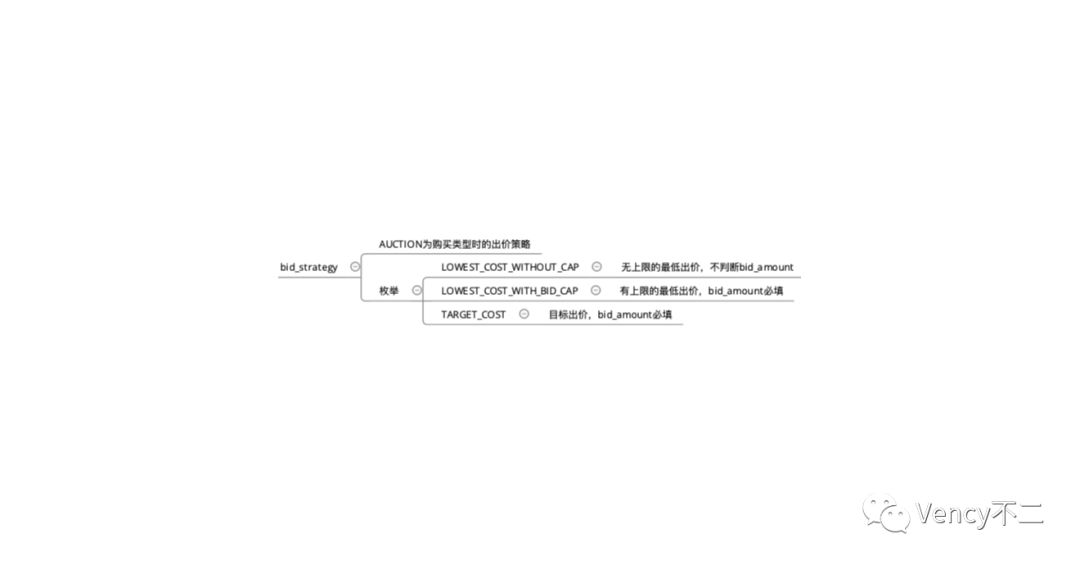
Bid strategy
Facebook bid strategy is two, minimum bid and balanced bid, minimum bid refers to the lowest possible fee bid, can fill in or not fill in the upper limit, balanced bid refers to as far as possible to fill in the bid. Facebook's advertising system is also a program of advertising, i.e. each bidding process is participated by the system, rather than the advertiser's manual participation, advertisers through the bidding strategy control, indirectly control each bid strategy. The lowest bid is likely to have a lower actual bid value bid_amout filled out, so the lowest bid is generally used.
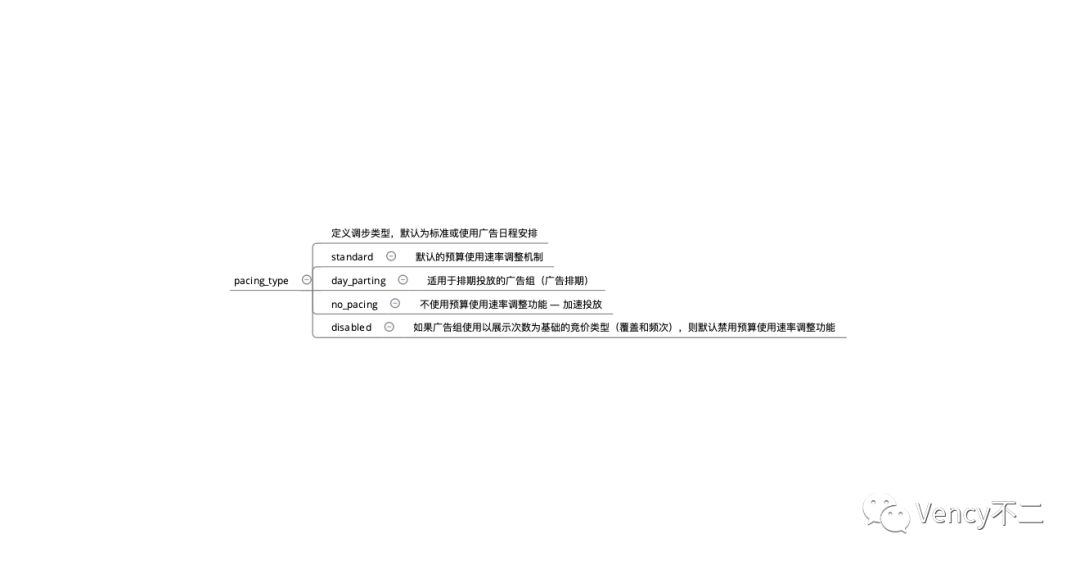
Ad group budget usage rate adjustment option
The delivery time period and the delivery type are controlled by pacing_type, the delivery period is which days of the few points to a few points to serve ads, time-related should pay attention to the time zone; The Budget Usage Rate Adjustment feature ensures that your budget is spent evenly over the ad group period, taking into account the very competitive situation that can occur during a period of time during the delivery period, by the type of delivery at a constant speed. Obviously, uniform delivery types are generally used.
The lowest and lowest goals in the bidding strategy, the constant speed and acceleration in the delivery type, are usually used by us, more like the initial default target bid and accelerated delivery of Facebook's advertising system, and then the minimum bid and uniform delivery are added through demand mining, as was the case with the integration of previous ad groups.
See the next article for ads, ideas, and delivery logic, and take a closer look at the Facebook Marketing API for more in-depth advice:https://developers.facebook.com/docs/marketing-api/
Next: In-depth Analysis of Facebook ADS Ad Delivery Platform (4): Advertising, Creativity, and Delivery Logic
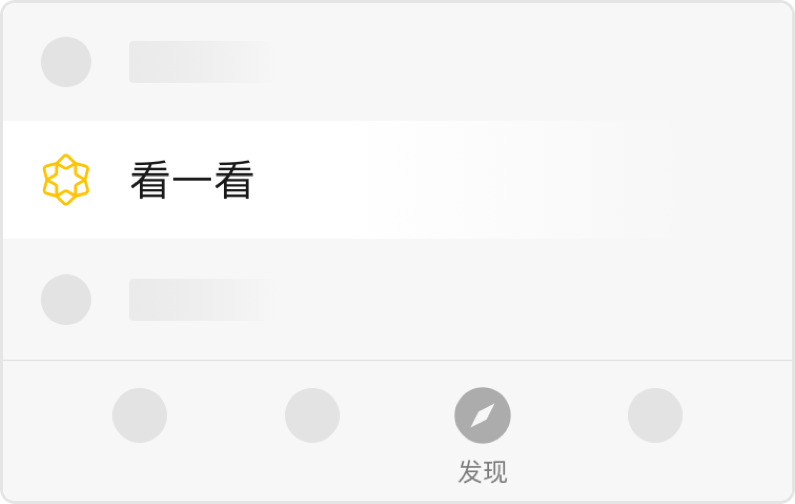
Send to the author